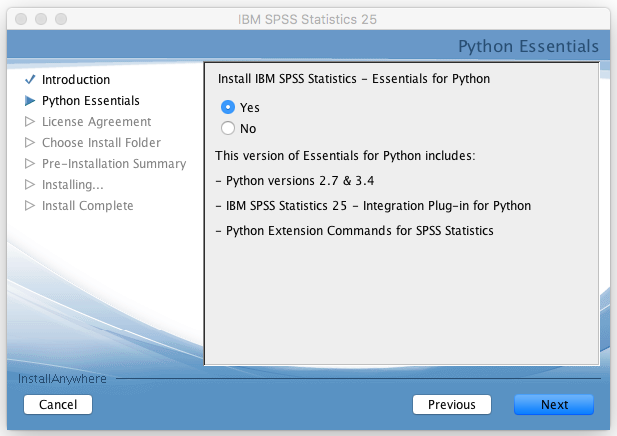

- #How to use spss on mac instructions how to#
- #How to use spss on mac instructions for mac#
- #How to use spss on mac instructions activation code#
- #How to use spss on mac instructions install#
#How to use spss on mac instructions install#
Click to install the SPSS statistics application.Open the installation file that you downloaded.Open the email so that it is available when you need to copy and paste the code.Switch back to the software list panel and click the Send Activation Email button.
#How to use spss on mac instructions for mac#
#How to use spss on mac instructions activation code#
#How to use spss on mac instructions how to#
You should now be able to select cases in SPSS, and to work with the resultant filtered data.Video - How to Install SPSS on a Mac Install SPSS This is Split File, and it will be the topic of a future tutorial. The other thing to note is that SPSS offers an alternative to Select Cases that works better in many situations. You’ll also notice that “Filter On” will no longer show at the bottom right of the Data View. This won’t delete the new filter variable, but it will render it inactive. The first is that you can return a data set to its non-filtered state by returning to the Select Cases dialog box (Data -> Select Cases), and choosing All cases (the first option available). There are a couple of things to note before we finish. This is a significant difference, with a t value of -3.1 and a p-value of. In terms of the result, we can see that the women in our sample fall to sleep on average 1 minute faster than women in the general population. Our dataset has 100 cases within it, of which 50 are women. The value for N here is 50, which tells you immediately that select cases has worked. You can see we’ve got Duration as our test variable, and we’re comparing it against a population mean of 8.15 minutes (the average amount of time it takes women in the general population to fall asleep in a statistics lesson). For example, you could tell SPSS to select cases where Sex is Female and Height is greater than 68 inches (“Sex = 0 & Height > 68”), or where Duration is greater than 8 minutes or Height is less than 60 inches (“Duration > 8 | Height Compare Means -> One-Sample T Test, and then set up the test like this. Obviously, it is possible to build much more complex expressions than this simple test of equivalence. You can see here we’ve got “Sex = 0”, which tells SPSS that it should only select cases where the value of the variable Sex is 0 (Female = 0, Male = 1). The idea here is to construct an expression in the text box at the top that functions to select cases. This is where you do the work of selecting female only cases. The Select Cases: If dialog box will appear. Once you’ve selected it, you need to click on the If… button (as above). We’re going to focus on the “If condition is satisfied” option, which you should select. This provides a number of different options for selecting cases. This will bring up the the Select Cases dialog box. This is where the select cases functionality comes in useful. The question is how do we select only female cases, thereby excluding males from any tests that we run? Select Cases But the trouble is our sample contains data for both males and females, and any tests we run will be on that basis. We want to compare this to the average time for women in our sample.

Imagine we already know that in the population as a whole the average amount of time it takes for a woman to fall asleep is 8.15 minutes. The two variables we’re interested in here are Sex, either male or female, and Duration, which is the number of minutes that elapses from the start of a statistics lesson before a subject falls asleep. The data we’re using for this tutorial comes from a hypothetical study that examines how long it takes people to fall asleep during a statistics lesson. In this tutorial, we’ll look at how to select cases in SPSS, and how to work with the resultant filtered data.


 0 kommentar(er)
0 kommentar(er)
